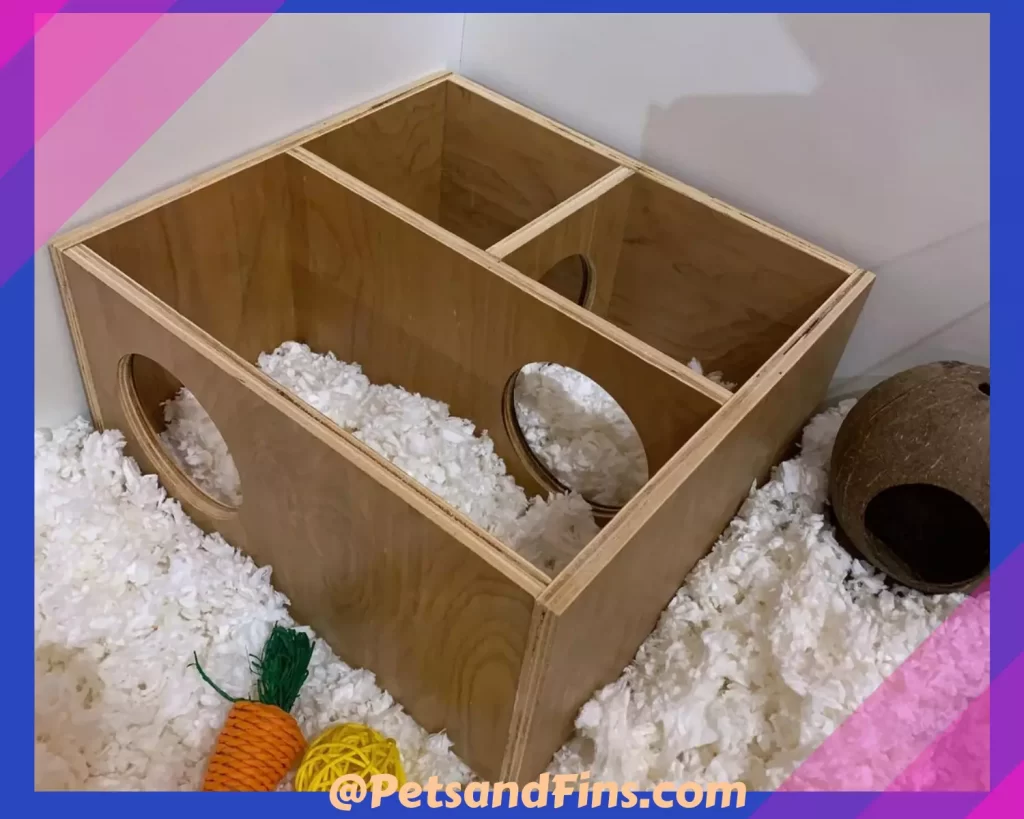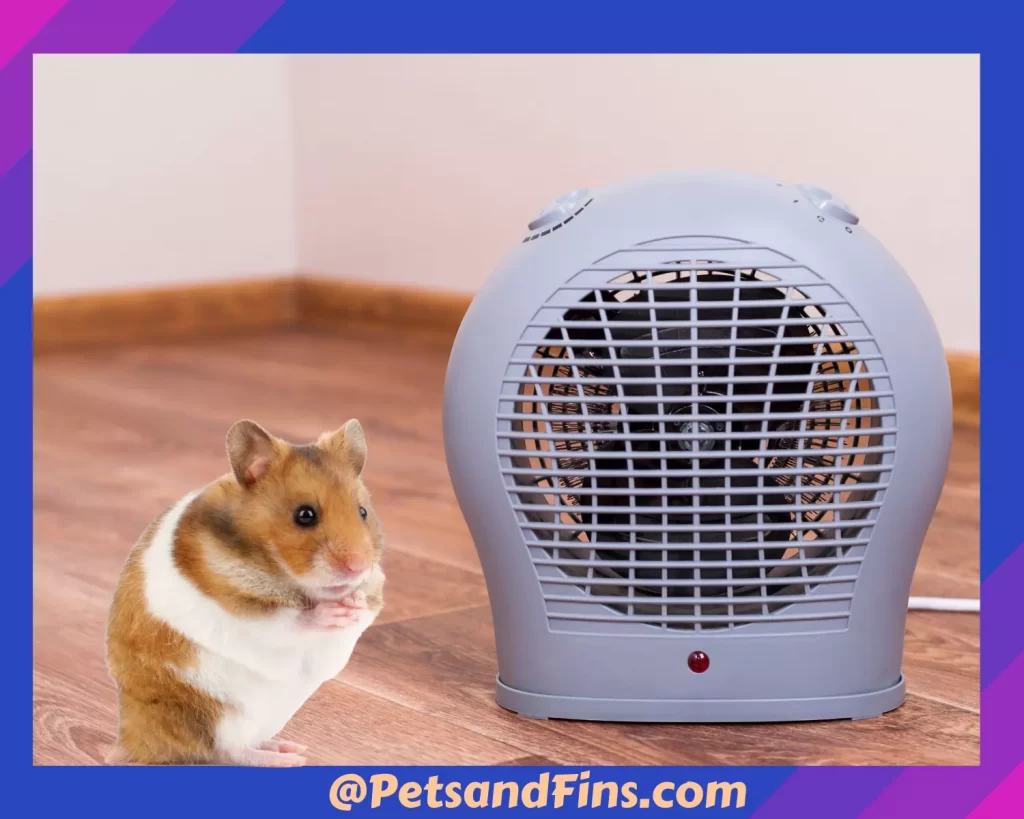Keeping your hamster warm in the winter is essential for their health. Hamsters cannot regulate their own body temperature and rely on you to provide a safe environment that avoids extremes of both hot and cold temperatures.
If you notice your pet acting unusually or if they seem lethargic, investigate their living conditions before taking any other steps. Too much heat can lead to respiratory problems and dehydration, while too little heat will leave your little critter cold and stiff!

How do you know if your hamster needs extra warmth? How can you keep them warm without overheating? How should they be housed during the winter months?
In this article, I will answer all these questions so that you can enjoy watching your furry friend run around without any worries!
Luckily, there are a number of ways you can help regulate the temperature in your pet’s habitat so both extremes are avoided. Read on for more information about how to keep your hamster warm this winter!
What Is The Ideal Temperature For A Pet Hamster?
We all know that hamsters love their warm and cosy homes. But what’s the best temperature for a hamster to live in? While there is no one definitive answer, it seems that the general consensus is somewhere between 65-75 degrees Fahrenheit (18 to 23 degrees Celsius).
This range not only keeps them from getting too hot or cold, but also helps maintain a healthy gut flora.
Hamsters are very sensitive to drastic changes in temperature, which can result in health problems such as heat stroke or hypothermia. To keep your pet happy and healthy, make sure you find the right balance of warmth and coolness.
Why Should You Keep Your Hamster Warm?
Keeping your hamster warm not only makes them more comfortable, but it’s also essential to their health. It is important to make sure that their living conditions mimic a natural habitat as closely as possible.

As I have already mentioned, your hamster’s body is unable to regulate its own temperature. If they are too cold, their metabolism will slow down, and if they are too hot, it speeds up! This means that you have to provide the right environment for them or else this could cause serious health problems.
How Can Being Too Cold Affect Your Hamster?
If your hamster is kept in an environment that’s too cold (below 59 degrees Fahrenheit or 15 degrees Celsius), this will cause their metabolism to slow down. This means they are not able to digest food properly and nutrients cannot be absorbed fully.They end up entering into a false hibernation or Torpor state, which can be fatal.
Click Here To Read In Detail About Hamster Hibernation !
Maintaining a steady body temperature also helps with thermoregulation, which prevents overheating or dehydration! Hamsters have limited sweat glands, so it is vital for them to avoid becoming dangerously hot.
If your hamster is too cold, it can lead to hypothermia. Symptoms of this condition include listlessness, low energy levels and lethargy in addition to shivering or shaking. While some cases are mild with minimal symptoms like these, others may be more severe which could result in shock.
Tips To Keep Your Hamster Warm

The best way to keep your hamster warm is by providing a constant environment that’s somewhere between 65-75 degrees Fahrenheit (18 to 23 degrees Celsius). How you do this will depend on the type of habitat they are living in.
Keep The Cage Away From Drafts And Cooling Units
While it is important to keep your hamster out of direct sunlight, you also need to make sure that they are not exposed to any harsh drafts or cooling units. This can be a major issue if their cage is placed near an air conditioning unit and this should be avoided at all costs!
If the cage is situated near these cooling units, it will become too cold for your hamster to live in safely.The same goes if you have any drafts from an open window or door – make sure they are covered up!
Provide A Good Quantity of Nesting Material:
You can keep your hamster warm in their cage by providing a sufficient amount of a suitable nesting material.This could be anything from untreated wood chips or shredded paper to non-toxic bedding like aspen pellets.
You should avoid using fabric that might get tangled around toes and fur because it could cause serious damage!

Make sure there is at least 6 inches of floor spacing (15 centimeters) or more so they have plenty of space for bedding material.
The main thing to keep in mind when dealing with cold temperatures and winter care for pets is moderation ! Even though it may seem like common sense, you should never overdo things by adding too many layers of bedding materials since this could lead to overheating instead.
Click Here To Find Out More About The Best Bedding Types For Your Hamster.
Provide A Thick Enclosed Hideaway
There are many ways you can help to keep your pet warm. One of the easiest things that you can do is get an enclosed hideaway with a thick, insulated flooring!
Your hamster needs to have a thick enclosed hideaway in their cage which they can go into if the temperature of their environment becomes too low. This will help them regulate their body heat and keep them warm when it gets cold!

It is important that you create this type of nest with an insulated material like wood chips or straw.This should be placed somewhere quiet so your hamster has some alone time, but make sure there are no drafts nearby since this could cause trouble for them!
Place The Cage Near A General Heat Source:
If possible, place their living area near a heat source which stays at about room temperature. If you have radiators, place their cage close so that they can benefit from the radiant heat it emits! Always keep checking to ensure that the cages are not overheated, since this mishap can easily happen.
Provide A Special Heat Source
If your hamster lives in an aquarium, then it should be fine without any additional heating devices. However, if their cage does not have good ventilation or comes with poor insulation, you may need to invest in some extra warmth!
There are several ways you can provide heat for your pet. Each method has its own benefits and drawbacks, so make sure you choose one that works well for both you and them (hamsters)!
Some great options include:
- Heat lamps
- Fabric tubes
- Heated water bottle pads
- Portable Heaters
Heat Lamp :A heat lamp is one of the best ways to provide warmth for your hamster. This option has many benefits, including:

- It’s very easy to clean and maintain as it can be placed outside of the cage.
- It provides a stable temperature which will not fluctuate.
- It helps with thermoregulation so overheating or dehydration won’t occur.
- The light emitted by this device also stimulates natural behavior patterns in nocturnal animals – perfect if you want them active during their waking hours!
A downside to using a heat lamp, however, is that there are some safety concerns associated with having an electrical object inside your pet habitat.
Make sure you use this method responsibly (and don’t forget about all the other dangers involved) and always follow manufacturer guidelines.
Another thing to note is that you should be careful about having it too close, as this could cause burns or start a fire!
Fabric Tubes
If your pet doesn’t like being underneath heat lamps, then using fabric tubes might be a better choice. These are safer than heat lamps since they don’t pose any threat from electrical currents but still maintain moderate temperature levels.
The downside to this option is that your pet may chew them up, which could cause lots of problems.
Heated Water Pads
If you have a small habitat, then using heated water pads under or inside of it can provide sufficient warmth for hamsters during the winter months.
Make sure you place the heated water pad in only one corner of your hamster cage, not right in the centre. This will ensure that if the temperature gets too hot for your hamster, it can move away to the other non-heated corners of the cage.

These devices are very easy to use and maintain, but there are some potential drawbacks, including:
They cannot regulate temperatures, so overheating might occur.
Over time, regular wear and tear on these items due to washing may decrease their effectiveness overtime.
Portable Heaters
There are several kinds of portable heaters which can be used to keep your pet warm. Not all of them might work, so you should do some research before committing to one!
Some good options include:
Quartz or Ceramic Heat Emitters :These emitters have no risk associated with them and provide a steady source of warmth for hamsters in colder months (they only give out heat when they’re on).
They don’t pose any threat since there is nothing electrical inside the cage, but you need to make sure that the cord stays outside it(or this could become another potential hazard).
You also shouldn’t put these directly onto wood surfaces because moisture may build up underneath, causing damage over time.

Common sense goes a long way with these heaters – make sure you use them responsibly and don’t leave your pet alone with them (or other pets) as they could chew through the cord.
Maintaining a stable temperature is essential for hamsters to maintain good health during winter months, but this should not come at the cost of safety! With proper precautions, there are lots of ways which you can provide warmth without compromising on their well-being.
Use Blankets To Separate Cage From Wall And Insulate Cage
Another simple way to provide warmth for hamsters is by using blankets, towels or fleece material to insulate their cage. This can be placed right against the wall of your pet habitat and will prevent heat loss from occurring there.
You also need to make sure that whatever material you use doesn’t have loose threads which your pets may swallow(or get tangled up in).
Switch From Normal Hamster Treats To Warmer Treats
One of the best ways to provide warmth for your hamsters is by choosing warmer treats!Warm treats help increase your hamster’s body temperature and are a better alternative, during cold seasons, ,to regular treats such as cheese or apple slices.
Some great options include:
- Warm Porridge
- Baby food Mixed With Warm Water (Check For Hamster Safe Ingredients.)
- Warm Scrambled Egg.
Pro Tip : Have A thermometer Where You Have Your Hamster Cage:If you have a thermometer, where your hamster cage is placed, then this will allow you to check the temperature of the habitat. This will let you know what kind of adjustments need to be made if it’s too hot or cold for them.
Wrapping Up
To keep a hamster warm, it is important to regulate their temperature. You can do this by making sure they have plenty of bedding and insulation in their cage or enclosure; and Avoid drafts caused by open windows or heating vents; provide warmth with an appropriately sized heated pad (never use hot water bottles).
You can also offer them food that provides additional calories, such as fruit, grain products (such as cooked rice), birdseed mix, nuts, seeds, and vegetables, and make sure the house temperatures don’t drop lower than 60 degrees Fahrenheit .
Hamsters are sensitive creatures and exposure to extreme temperatures can cause serious problems! Taking proper precautions during the winter months should help protect these little guys from getting sick so that they’re always safe and sound in their cages!
XoXo
Genie
